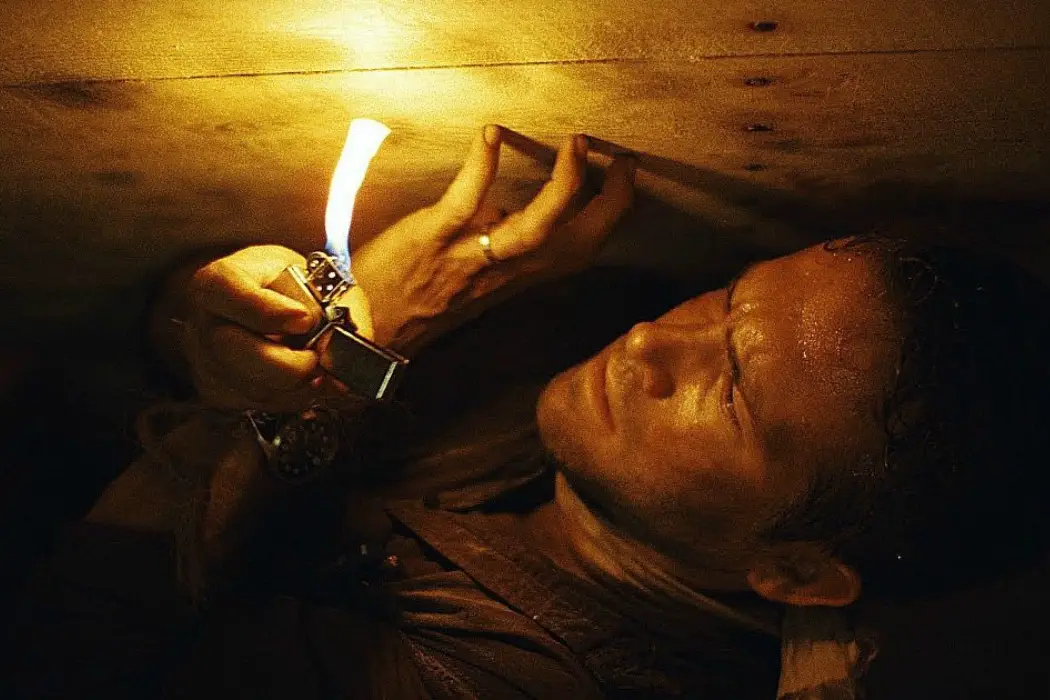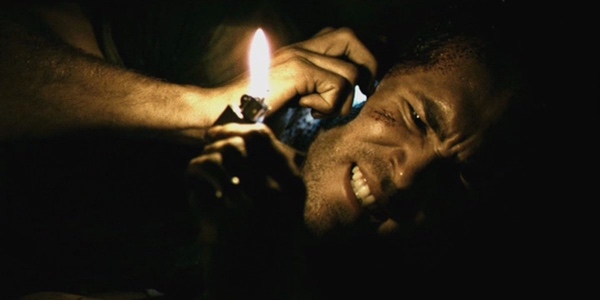Horrific Inquiry: BURIED (2010)

Stephanie Archer is 39 year old film fanatic living in…
Welcome back to the scariest, and at times goriest, column here at Film Inquiry: Horrific Inquiry. Twice a month, I will be tackling all things horror, bringing two films back into the spotlight to terrify and frighten once more. And occasionally looking at those that could have pushed the envelope further. Join us as we dive deep into the heart of horror, but warning, there will be spoilers.
The terror of confinement – a fear that plagues many. Yet, the anxiety of enclosed spaces is not limited to individual restraint, the deep anxiety surfaces just by watching the confinement of others. It is this fear that generates the horror, lending Rodrigo Cortés Buried to be the perfect film for Horrific Inquiry to take a deeper look at. While its horror status can be debated, listed as a mystery and thriller on IMDB, for many, this film is a terrifying 95 minutes of fear, anxiety, and frustration as its limited enclosed set, intense close-ups, and encapsulation of a nightmare come to life before our eyes. Fronted by Ryan Reynolds, Buried proves itself worthy of a horror status.
Immersive Opening
Buried feels like an international thriller from its opening credits, scrolling visuals and Victor Reyes‘s score radiating a sense of James Bond meets The Italian Job. Yet, it is misleading, creating a sharp contrast for the opening scene that follows. With the score, you feel as though the action is around the corner, with intense presets for the film that will follow. Yet, when Buried finally begins, the screen and viewers are submerged in darkness and silence. It is a prolonged moment, allowing the atmosphere of absence and unsettling claustrophobia to work its way into the core of the film and its audience. As it successfully drags out the darkness, the silence is finally broken, breathing and coughing filling the emptiness of the void. As Paul (Ryan Reynolds) begins to wake up, we hear his quick realization that something is wrong. The fear immediately takes hold of his breathing, the shortened breath matched with the intense banging on the coffin walls. The opening scene is immersive, shared darkness radiating the feelings of the character within. We can feel the terrifying realization with him, giving credibility to the horror of the film while further driving the intensity Buried will need throughout its run time.

As the feeling of panic rises, there is a flicker of light, almost a hope in the darkness contrasted to the full realization of the situation Paul finds himself in. With the light, he is able to confirm his fears. Director Cortés does not let us see the bigger picture yet though, the lens giving audiences an extreme close-up of Paul’s eye. It is a tranquil moment as we watch his mind come to the understanding the light has proven to be true. As the camera pulls away, we see the confinement surrounding Paul, dust falling quietly between the wood. We understand not only is he sealed within the coffin, but clearly buried as well. We are forced to watch as Paul succumbs to his fear and despair, his screaming the only sound. The opening scene is in no rush to move the narrative along, allowing the horror to settle into Paul and its audience, leaving the aspects of a thriller aside and embracing the fear at the heart of horror. But where many will find the horror here in the confinement, Buried goes deeper, taking this film from international thriller to psychological horror.
Abandonment
It is not only the terror of confinement but the fear of abandonment. When the film feels it has created the appropriate atmosphere, it begins to move the narrative forward, a cell phone vibrating at Paul’s feet. The enclosure becomes smaller watching him struggle to reach the phone, and when he finally reaches it, there is a release – a relief that help is only a dial away. But as we quickly discover, it is further than ever. A truck driver in Iraq, Paul has lost the emergency number that was given to him if he gets in trouble. Working through a seemingly obvious run down of numbers, Paul calls his wife first, both home and her cell, both calls going to voicemail. Next, he calls 911, the operator repetitively asking for Paul to disclose his location. Next comes the FBI and even his own trucking company. From being put on hold and finding little help available, Paul’s first real contact is with the man who buried him.

What Buried does is not only create the claustrophobia of confinement but the claustrophobia of abandonment. As the heat in the box is rising and his breath is becoming shallower, Paul is faced with the frustration of getting someone on the phone that can genuinely help him. As his voice emulates this frustration with each call, the intense close-ups increase, sharply zooming in on parts of his face and the blood on his neck. These extreme close-ups build the intensity and heighten the frustration, giving the sense of time running out and further driving the desperation and claustrophobia. As each call goes unanswered, help always out of reach, viewers may find themselves questioning which is worse – the box itself or the absence of those outside of it.
Conclusion
Buried looks at both confinement and abandonment, its successful examinations resting solely on the welding of the camera and on its leading star. Ryan Reynolds, whose ability to wield comedy and wit, delivers a deeply immersive performance that draws the audience into Paul’s predicament. Buried relies heavily on both verbal and nonverbal expression, and Reynold‘s does not waiver in his performance. From start to finish, he gives Paul the justice to encapsulate the terror, giving his character the arch of trauma and pain needed for the film to succeed.
As Paul questions several times throughout the film the idea of others caring for those in traumatic and devastating situations, Buried builds to its epic conclusion. Throughout, his character has waved and waned on the push for survival and the acceptance of the end – much of this motivation his own conjuring and not on the encouraging words of others. As the film reaches its final moments, Paul is given a beacon of hope, that he does matter as Dan Brenner, one of the men working on his case, calls saying they are on their way to get him based on intel they had gotten from an informant. Paul tells his wife they are coming and he finally receives a call back from her as well. As his coffin is filling with sand, at this moment the feeling he was left with of abandonment and loneliness is eliminated, and the words of those who both love him and have dedicated themselves to finding him fill his ears.
Even when it is discovered that help was not minutes away, Paul’s final thoughts are in knowing that while the end has come, he was not alone – he was loved and cared for, even in the face of a lie. He died knowing he mattered. It is a strange release at the end of the film, the initial feeling more of a “what the-” as the film suddenly ends. Yet, with time, the shock of how it all ends melts away, giving the film a multifaceted ending whose layers go deeper into human psychology than previously realized. And while the ending is far from the end game many would have predicted or wanted, it shows both the depths of humanity and the need to matter.
Have you seen Buried? What did you think? Let us know in the comments below!
Watch Buried
Does content like this matter to you?
Become a Member and support film journalism. Unlock access to all of Film Inquiry`s great articles. Join a community of like-minded readers who are passionate about cinema - get access to our private members Network, give back to independent filmmakers, and more.












